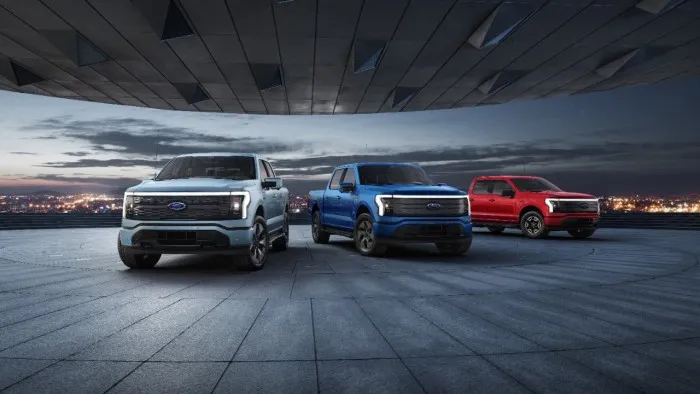Author: Mr Yu
Nearly the octogenarian American President Joe Biden had some fun in Detroit’s Ford test field.
According to The Washington Post and Reuters on May 18th local time, Biden visited Detroit, Michigan and test-drove the latest Ford all-electric version pickup truck, the F-150 Lightning, at the Rouge Electric Vehicle Center on the outskirts of the city.
On that day, in the speech delivered at the electric car factory, Biden acknowledged China’s leading position in the field of electric vehicles and emphasized that “this situation cannot continue.”
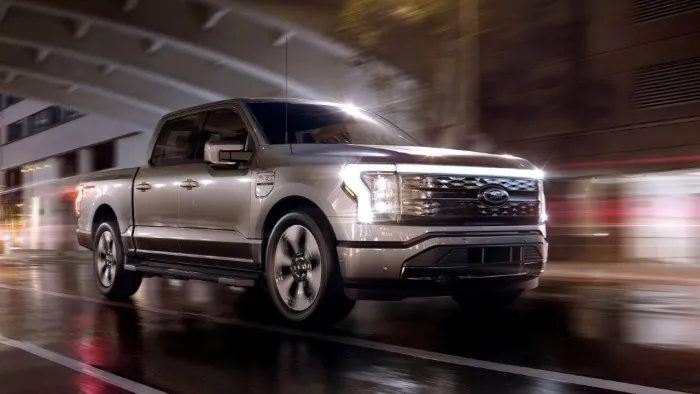
The highly anticipated “Thunder Descends”
“This sucker’s quick!”
Facing the media reporters surrounding the all-electric F-150 Lightning test vehicle, Biden put down the car window and expressed his feelings for the first time. From the on-site photos, we can see a strong special agent sitting in the co-pilot seat of the all-electric F-150 Lightning pickup truck to protect the elderly driver from sudden back injury. According to the subjective estimation of the octogenarian, this test drive car can achieve 0-60 MPH in about 4.3 to 4.4 seconds.

This all-electric version F-150 pickup truck built by Ford’s North American high-performance department SVT (Special Vehicle Team) is named Lightning, which corresponds to the ninth-generation Ford F-150 Lightning launched in 1993.
This is a model that Ford has high expectations for.
This tribute reminds people of the American F-35 fighter jet, which is also named “Lightning.” And the F-35 also pays tribute to the land-based fighter P-38 “Lightning” that had the glorious record of shooting down Yamamoto Isoroku’s plane during World War II.
No wonder Ford’s press release praises it as “the most intelligent, innovative and revolutionary product in the iconic F-series pickup trucks, where Ford dominates the market.” For a long time, almost all of Ford’s most advanced technologies are first deployed on the F-series pickups, even higher than the Lincoln series.
On May 20, 2021 Beijing time, Ford officially released the all-electric version F-150 Lightning pickup truck.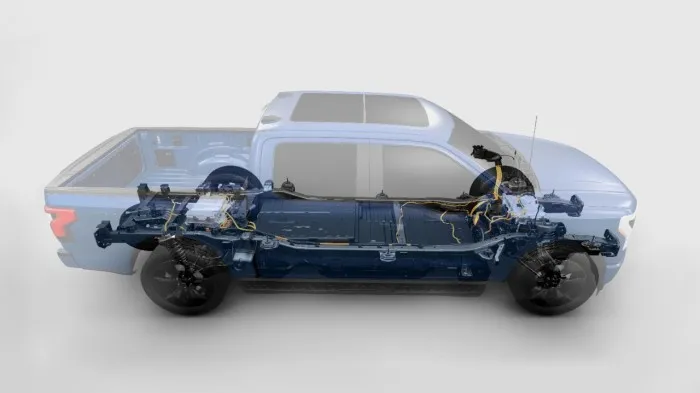
Pure Electric F-150 Lightning: A New Formula with a New Taste
For a pickup truck, powerful performance is naturally a standard feature. The pure electric F-150 Lightning, with a maximum power of 563 horsepower, a 0-60 mph acceleration time of about 4 seconds, and the highest peak torque of 1050 Nm in the history of the series, declares itself as the legitimate successor of the best-selling F-series pickup truck that has been popular for decades.
In terms of “hardware”, Ford has spared no expense to fulfill the slogan of “Build Ford Tough” for the pure electric F-150 Lightning. Equipped with dual motors and 4WD system as standard, in addition to the high-strength military-grade aluminum body, the vehicle adopts a brand-new independent rear suspension system to ensure better ride comfort.
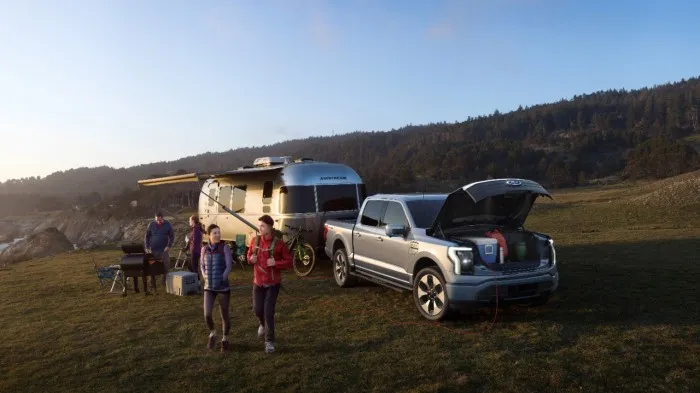
In our minds, a white adult male closes the door of his pickup truck and walks slowly towards us, wearing a red checkered shirt with rolled-up sleeves that reveal his strong biceps muscles, paired with slightly outdated jeans and khaki-colored leather shoes. This visual element has almost become a standard image of middle-aged American fathers in movies.
To highlight its identity as a product of the intelligent wave, Ford has equipped the pure electric F-150 Lightning with a series of intelligent connected functions: Ford’s BlueCruise advanced driving assistance system supports users to enter the “semi-autonomous driving” status on specific roads. At the same time, the entire vehicle can achieve remote upgrades through OTA to ensure that the vehicle is always up-to-date.
Equipped with a new generation of lithium-ion battery packs, the pure electric F-150 Lightning provides users with two options for range:
Standard battery pack – 370 km of range under EPA standard
Extended battery pack – 480 km of range under EPA standard
Therefore, some colleagues at the GeekCar editorial department have raised questions about the range of the pure electric F-150 Lightning:
As pickup trucks often involve a lot of loading and towing, ranging from light cargo and passenger transport to heavy-duty boat hauling and RV towing, as the most popular model among American families and especially the middle class, is such range performance a bit lackluster? And can it be accepted by consumers in the US driving environment that relies on highway networks?
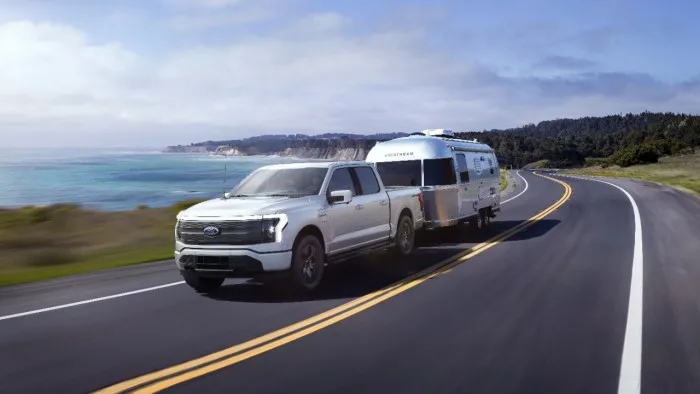 ## Fast Charging vs Range Anxiety
## Fast Charging vs Range Anxiety
To avoid range anxiety being a disadvantage, Ford has taken a similar approach to Chinese smartphone manufacturers.
The solution to range anxiety not only emphasizes the battery capacity, but also improves the efficiency of charging while making charging more accessible. This new idea, especially in the current direction, often provides better room for performance, design, features, and user experience.
Ford is currently the only company offering an 80-amp home charger as standard equipment, making it easy for users to quickly charge their pickup truck at home. According to Ford’s data, the all-electric F-150 Lightning can add 48 kilometers of range per hour of charging on a home charging station, and a long-range version can be fully charged from 15% remaining battery power in 8 hours. When driving, drivers of the all-electric F-150 Lightning can use the FordPass app to access a network of more than 63,000 charging stations in North America. At the same time, the new SYNC 4A system on the all-electric F-150 Lightning provides intelligent mileage calculation function, which can accurately estimate the range based on weather, traffic, load, and towing weight, and mark the locations of public charging stations on navigation.
It can be seen that, in order to minimize user and potential user concerns about range anxiety, Ford has spared no effort in this regard.
In our view, this is also a move of recognizing reality.
Unlike our familiar domestic environment, more than 80% of the urban population in the United States is concentrated in large metropolitan areas on the east and west coasts, which are connected by dense highway networks. This usage environment places high demands on the vehicles’ range.
If you don’t have a concept of the number of 63,000 charging stations in North America, let’s compare it.
As of April 2021, the number of charging stations put into operation in Beijing was 83,000.
According to estimates, the total number of public charging stations reported by the members of the China Electric Vehicle Charging Infrastructure Promotion Alliance is 868,000.
In the past year, an average of about 26,800 public charging stations were added per month.
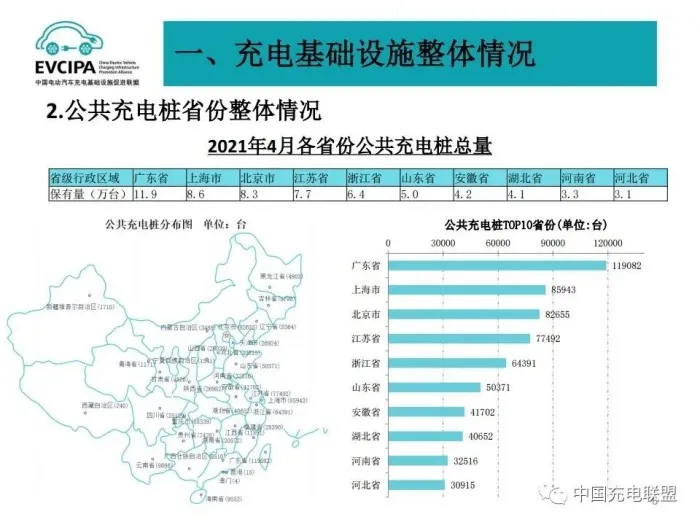
In China, the construction of public charging stations is expanding at a rate of more than 10,000 new ones per month. In this regard, we advocate looking at the issue with a development and dynamic perspective, since the United States has also played the role of infrastructure maniac in the world history for a long time.
At least, for American car owners with independent garages, it is more practical to charge at home before going out, until the goal of 500,000 charging stations throughout America by the Biden administration’s plan is achieved by 2030. It seems to be a bit like the logic of mobile phone users. The only difference is that people cannot carry new energy batteries on their bodies like power banks.
According to Bloomberg’s data on new energy finance, the price of charging piles in the American market ranges from $2,000 for entry-level products to $100,000 for top-level products.
From what we know, the all-electric F-150 Lightning will be officially off the line at Ford’s Rouge pickup truck factory in 2022. Ford stated that the new electric vehicle center will focus on the electrification of pickup truck production. In the past few years, facing Tesla’s continuous declaration of entering the pickup truck market, in 2019, Ford directly invested $500 million to acquire the start-up company Rivian, which introduced R1T electric pickup truck. With Rivian’s modular electric vehicle manufacturing platform, Ford will be able to smoothly produce more all-electric models.
Ford’s determination to defend its core market is self-evident.
It is different that on May 20, 2021, Ford officially unveiled the all-electric F-150 Lightning pickup truck. In contrast, Tesla’s Cybertruck is still in the stage of accepting reservations for ¥1,000, and “all configurations are limited to U.S. specifications. Global specifications will be developed according to demand in the future” is mentioned in a less prominent position.
The goal of the President’s shopping trip is to surpass China. “You know, China is the world’s largest and fastest-growing electric vehicle market, and the key part of electric vehicles is batteries. Currently, 80 percent of battery production is completed in China.”
We cannot be sure how much exaggeration is involved in the facts and data cited by Biden in his speech, but there is no doubt that it sounds like something plausible.
“Currently, China is ahead in this competition, there is no doubt about it, this is a fact.”
Instead of the unpredictable weather of his predecessor, Biden candidly admitted that there is a gap between China and the United States in the field of electric vehicles: “In the past, the United States invested more in research and development than any other country in the world, while China ranked eighth or ninth; now, China ranks first and the United States ranks eighth. This situation cannot continue.”On March 31, 2021, the Biden administration announced a plan worth $174 billion aimed at supporting the U.S. electric vehicle industry, including the development of electric vehicle infrastructure and electric buses, and incentives such as investing $15 billion by 2030 to build 500,000 charging stations and more.
In a speech inside a factory, Biden thanked the United Auto Workers for their support in helping him get elected to the Senate. He reiterated his support for unions and American workers, affectionately calling them “the biggest secret we have,” and encouraged automakers to “deepen” their relationships with unions.
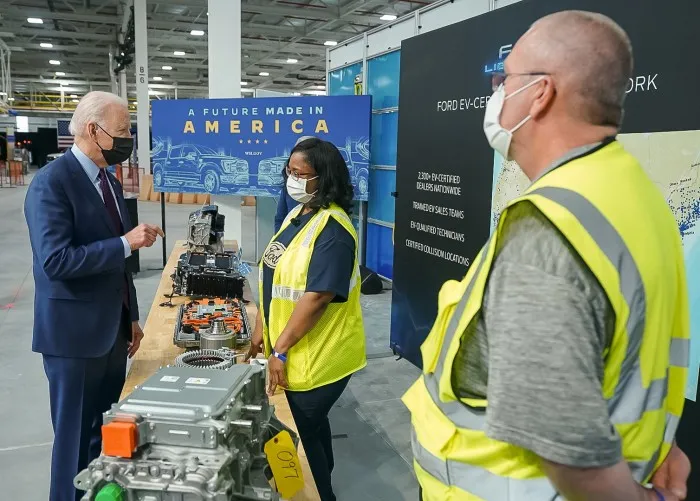
Finally
As usual, we end today’s topic with a little story.
About five years ago, Mr. Yu, a former office worker in a state-owned enterprise, felt very bored with his life and started working part-time as a bartender in a friend’s cocktail bar. Mr. Yu’s partner was an American guy in his forties, J, who looked like a rough and stern Russian mafia member from a movie, but was actually an intellectual with multiple degrees.
One night, after the bar closed, the two of them coincidentally discussed the ongoing election farce across the ocean, and J, who was just a little tipsy, expressed his dislike for a particular candidate:
“Do you know who supports him? All those auto and manufacturing workers on the assembly line, who used to have decent jobs with good incomes. Then came Wall Street, Silicon Valley, high-tech, automation, and they all lost their jobs, but they couldn’t accept the reality that they were no longer respected. Then he appeared, and they thought he understood them and could bring them back to the mainstream of society. How could that be possible?”
J clenched his fists and vigorously delivered his opinion, complete with a very unauthentic “Beijing accent” at the end.
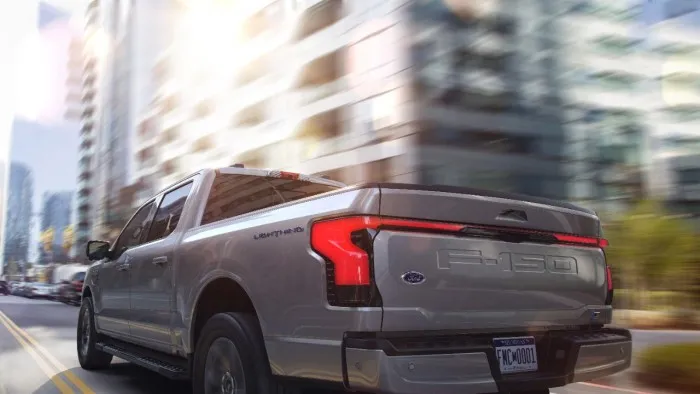
From our perspective as an industry media, the automobile is the embodiment of design, technology, business and brand spirit.
The president, who is in his twilight years, is personally promoting this cause, and the move directly points out that the United States is far behind China in new energy vehicles.
Obviously, Biden’s move is aimed at boosting morale and making a statement domestically. Through the “Electric Vehicle Plan” and aggressive spending, he wants to fulfill his promises to support domestic development and production in the electric vehicle industry.We previously mentioned in “Tesla and Ford’s Battle in the Pickup Truck Market” that Americans are very practical when it comes to cars, and pickup trucks are a practical vehicle. Whether Ford’s new all-electric F-150 Lightning can shake the traditional gasoline-powered pickups’ position in the hearts of American users remains to be seen when the annual data is released.
After all, for the past forty years, the Ford F-series has always been the top-selling vehicle in the United States.
This article is a translation by ChatGPT of a Chinese report from 42HOW. If you have any questions about it, please email bd@42how.com.
